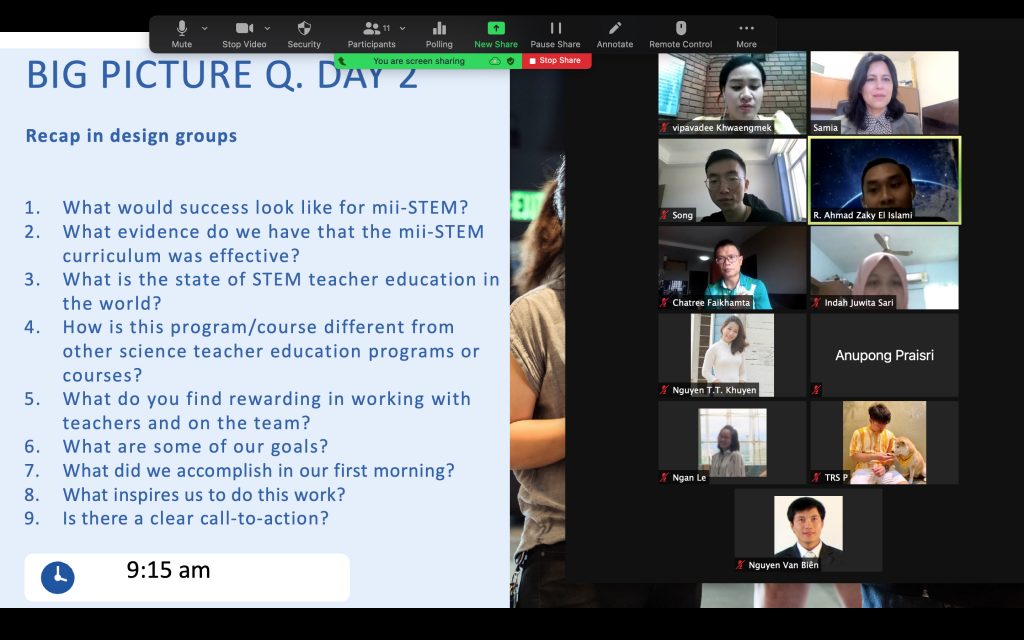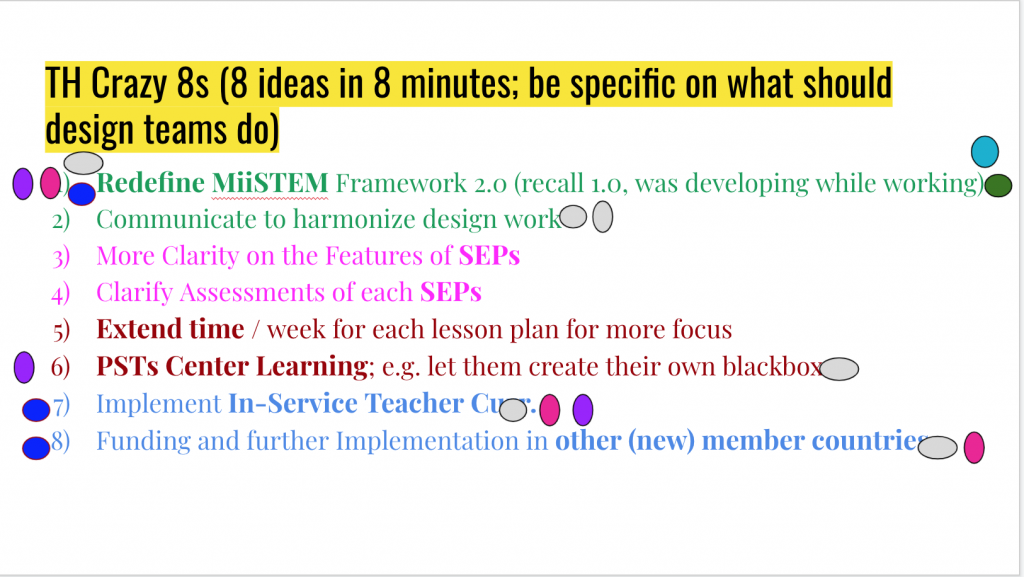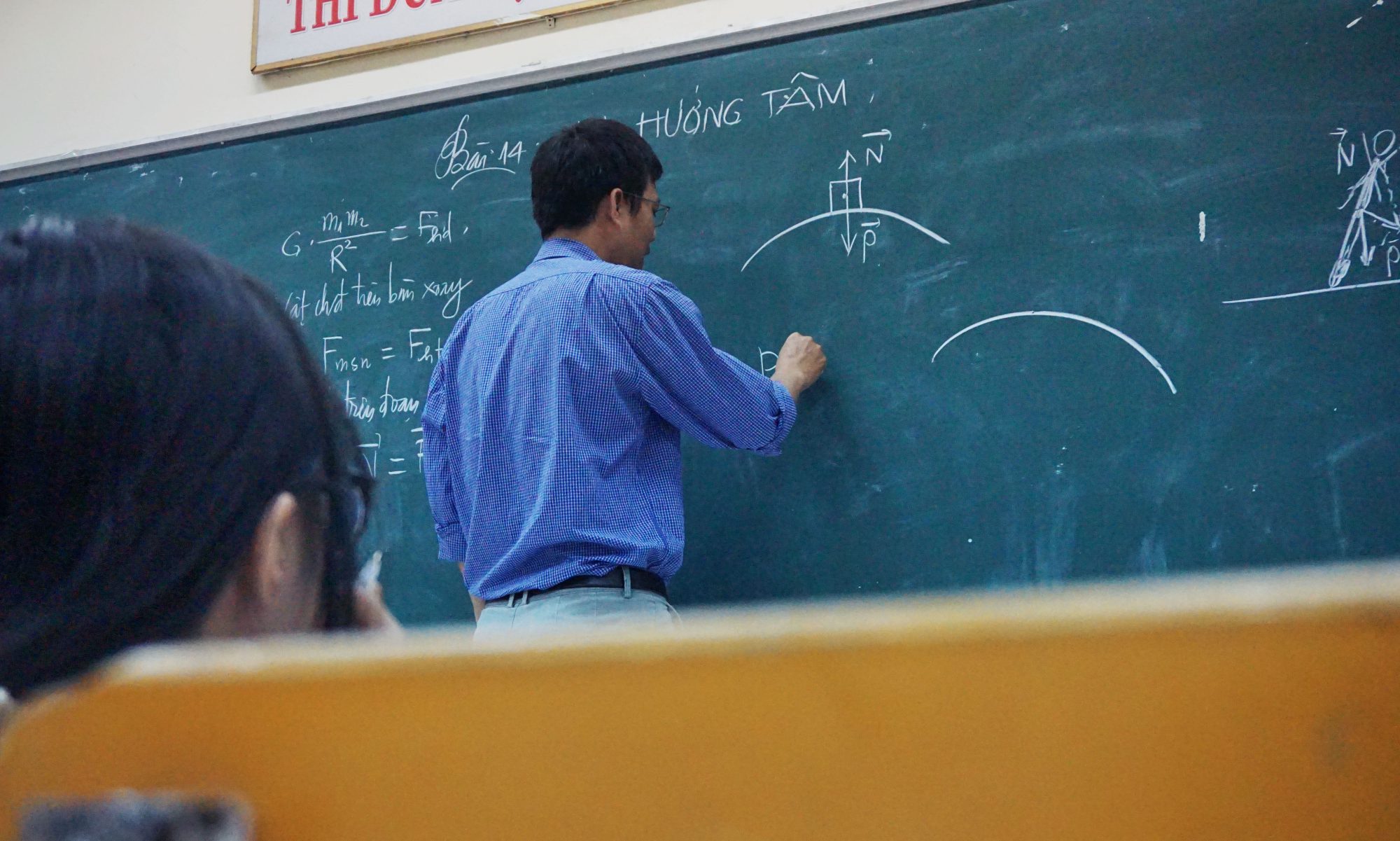My name is Ngan Le, and I am a PhD Student at the Hanoi National University of Education, in Hanoi, Vietnam and a member of MII-STEM. The MII-STEM group recently held a Design Sprint over two mornings to build a mii-STEM 2.0 curriculum based on all the research trials in actual science teacher education classrooms of all three countries: Thailand, Indonesia, and Vietnam. A design sprint is a way of working in which every member of the group is considered a designer. A “curriculum design sprint” is MII-STEM’s term for a framework for answering critical questions about curriculum through design, prototyping, and later, testing ideas about the curriculum with stakeholders and participants. It is based on Google’s Design Sprint methodology, toolkit and templates.
In the two mornings of our design sprint, everyone did all of the best to discuss and suggest many exciting ideas with the leadership of Prof. Samia Khan. In advance of the design sprint, each member reflected what was salient about the MII STEM course we taught in teacher education with an advanced survey, including questions, such as: what would success look like for mii-STEM, what evidence do we have that the mii-STEM curriculum was effective, etc.?
The design sprint occurred in three phases, as shown in the picture. There are 11 members present, including professor and Ph.D. students joining to revise our science teacher education curriculum.


On the first day, after the introduction of Prof. Samia, representative sof each country shared achievements and challenges involving the practical implementation of our curriculum in teacher education for future science teachers and working science teachers. For this section, everyone has an opportunity to review all pros and cons of the MII-STEM 1.0 curriculum. Right following the review phase is the HMW section, in which we wrote all “How might we” questions about what we need to do next for the MII STEM course. In general, all three countries had some common main remarkable points about the target participants, the mode of delivery of class – online or offline or blended, and MII-STEM learning outcomes with appropriate assessments. Based on these points, we moved on to “crazy 8’s”. Each country listed 8 ideas in 8 minutes. After that, everyone engaged in “dot voting”. Each member has three dots to vote for three exciting ideas that he/she thinks the most prominent to be considered soon for a revised MII-STEM 2.0 curriculum.

After voting, we found out that there are three prominent issues that we may focus on doing for the next step: (1) Redefine MiiSTEM Framework 2.0, (2) Develop an In-Service Teacher Education course ; (3) Revise all assessment tools for Mii-STEM course. Prof. Samia Khan divided us into three breakout design groups on zoom for discussion. Each design group worked together and sketched a picture of what we will do for the following day.
On the second morning, we paid attention to three remarkable issues and sketched out a “journey map” for the future. We continued working in group and put the most effort into making our issue more and more realistic. There are so many results gotten in the second morning. All of us were very happy about our work.


For me, it has been a wonderful curriculum Design Sprint. I have learned a lot from this experience, such as organizing a design sprint and working as group to create new ideas. The most crucial result of the design sprint is that we can see what we should do next for new MII-STEM curriculum research.
Thank you to all the professors for giving me an opportunity to join the project.
Thank you to all Ph.D. friends for letting me learn more from you.
